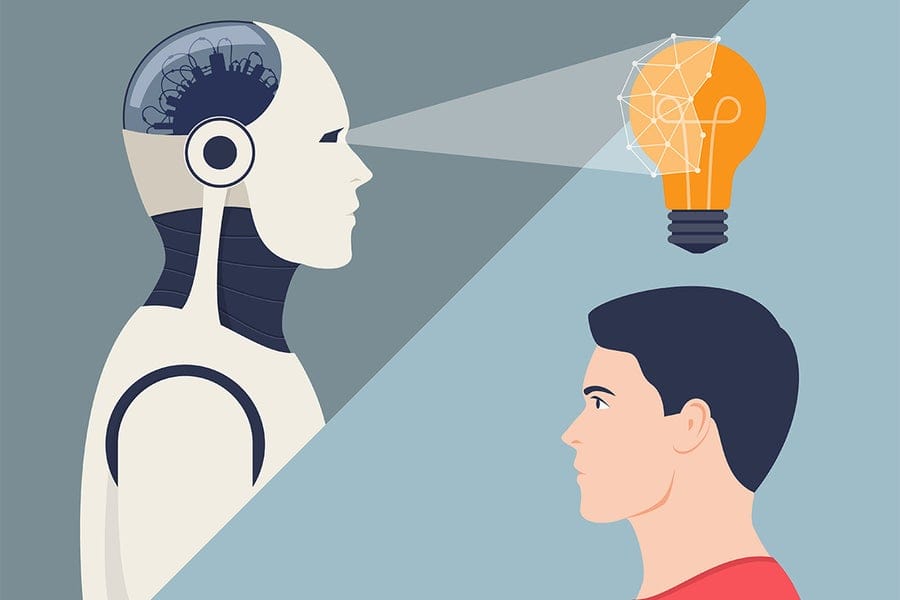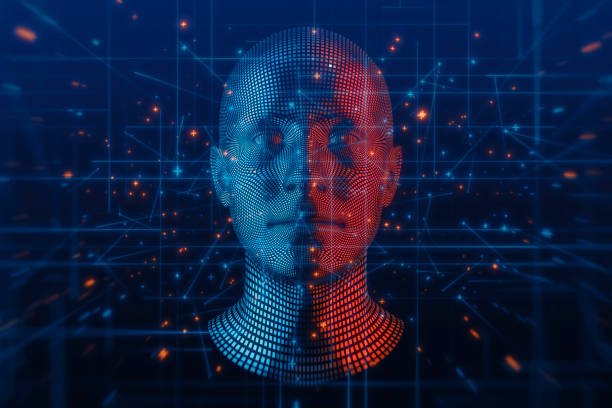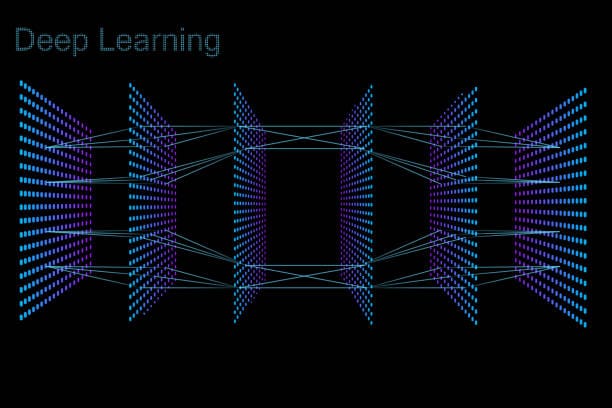Somewhere in a quiet server farm, behind layers of steel and fiber optics, a machine is making a decision. It may be scoring a loan application, sorting résumés, generating courtroom risk assessments, or filtering through medical records to suggest treatment options. Its circuits hum quietly; its logic appears cold and clinical. It has no opinions. It does not hate, fear, or prefer. And yet, that decision may alter the course of someone’s life.
When artificial intelligence systems produce results that unfairly favor or discriminate against certain groups, we call that bias. The term usually conjures images of human flaws—of prejudice, bigotry, favoritism. But when a computer does it, the reaction is more confounding. How can a machine with no emotions or motivations be biased?
It’s a question that challenges our most basic assumptions about fairness, responsibility, and the very nature of intelligence. And as AI quietly permeates every corner of human life, it becomes one we can no longer afford to ignore.
The Myth of the Neutral Machine
For much of the early 21st century, artificial intelligence was hailed as a kind of oracle—objective, efficient, free from the messy irrationalities of human judgment. This perception was not entirely naive. Machines, after all, process data according to predefined rules. They don’t get tired. They don’t hold grudges. They don’t have cultural baggage. They don’t lie, unless programmed to.
But what this view misses is that AI is not created in a vacuum. It is a reflection of the data it is trained on, the goals it is given, the structure of the algorithms it employs, and the values—both explicit and implicit—of the humans who build and deploy it.
Bias in AI is not just possible. It’s inevitable—unless explicitly accounted for and mitigated. And understanding how it arises begins with a humbling realization: machines may not have opinions, but they are shaped by ours.
Data: The Mirror with a Memory
At the heart of every AI system is data. It’s the fuel that drives machine learning—the process by which systems learn to recognize patterns, make predictions, or simulate reasoning. But data is not neutral. It’s a historical artifact, an imprint of our world as it was—and as it is.
Consider a facial recognition system trained on millions of photographs. If the majority of those images are of light-skinned faces, the system will become much better at identifying light-skinned individuals than darker-skinned ones. This was no theoretical concern. A 2018 study by MIT researcher Joy Buolamwini and Timnit Gebru showed that commercial facial recognition systems had error rates of less than 1% for light-skinned men, but over 30% for dark-skinned women.
Or take predictive policing systems, which analyze crime data to decide where law enforcement resources should be deployed. If historical data shows higher arrest rates in predominantly Black neighborhoods—due not to higher crime, but to discriminatory policing practices—then the system will reinforce that pattern, sending more police to those areas and perpetuating the cycle.
These systems don’t “intend” to discriminate. They merely reflect the biases embedded in their training data. They hold up a mirror to society—but it is a mirror with a memory, one that forgets to question the assumptions behind what it reflects.
Algorithms: Rules of an Unseen Game
Even with perfectly balanced data (which rarely exists), bias can creep in through the algorithms themselves. Algorithms are designed by humans. They involve choices—what features to prioritize, how to weigh outcomes, which objectives to optimize.
Imagine an AI hiring tool that ranks job applicants based on “similarity to previous successful employees.” If the company’s past hiring favored men in technical roles, the algorithm will learn to prefer men—even if no explicit instruction was given to do so. It’s not the algorithm being sexist. It’s the criteria it was taught to value.
This was precisely the issue at Amazon in the late 2010s, when a recruiting algorithm trained on ten years of resumes began penalizing applications from women. It had “learned” that the company’s historically male-dominated workforce was a signal of success.
Similarly, in credit scoring, an AI might learn to weigh ZIP codes as a strong predictor of financial reliability. But if those areas are historically segregated, it can result in racial discrimination, even if race itself is never explicitly considered.
The problem is not that these algorithms are evil. It’s that they are ruthlessly literal. They find shortcuts, exploit correlations, and pursue optimization without ethics. In the human mind, morality acts as a kind of override. In a machine, there is no such safeguard—unless we build it in.
The Seduction of Objectivity
One of the most dangerous misconceptions about AI is that it is “objective.” This notion persists in part because it is comforting. Delegating decisions to machines seems to remove human messiness from the equation. It offers a kind of moral outsourcing: if the algorithm made the call, then no one is to blame.
But this is a mirage. AI does not eliminate bias. It encodes it, amplifies it, and cloaks it in the language of science.
This is why biased AI systems often go undetected for years. Their results are presumed fair because they are produced by machines. A judge using a risk assessment algorithm might assign harsher bail terms based on a flawed score. A doctor might prioritize patients based on an algorithm that subtly undervalues minority patients’ pain. An employer might deny thousands of applicants a job interview without ever realizing their AI tool had built an invisible wall.
The veneer of objectivity shields the system from scrutiny. And in doing so, it blinds us to the very real harm being done.
Who Is Responsible When the Bias Isn’t Intentional?
The question of responsibility becomes murky in AI ethics. If a machine makes a biased decision, who is at fault? The developer? The data annotator? The company? The user?
Traditional legal and moral systems are ill-equipped to handle this ambiguity. There’s no conscious agent to hold accountable. No evil intent. No clear moment of wrongdoing. Just layers of decisions, each made with plausible deniability, leading to outcomes no one fully controls.
This diffusion of responsibility is dangerous. It allows companies to shrug off criticism. It obscures the need for oversight. It fosters a culture in which harm can be dismissed as a technical glitch rather than a systemic failure.
To confront this challenge, a new kind of accountability must emerge—one that does not wait for bias to become visible before acting, but anticipates and prevents it from the start.
Building Fairness into the Code
Fortunately, bias in AI is not a terminal flaw. It can be addressed—through better data practices, algorithmic audits, fairness metrics, and participatory design.
One promising approach is “algorithmic fairness,” a set of techniques aimed at measuring and mitigating disparate impacts. These include ensuring equal accuracy across demographic groups, removing proxy variables that correlate with sensitive attributes, and using counterfactual fairness (asking whether the same decision would have been made if a key attribute, like race or gender, were different).
Another approach is transparency. Opening the “black box” of AI—either through explainable models or rigorous documentation—helps users and stakeholders understand how decisions are made. This fosters trust and allows biases to be detected before they cause harm.
Crucially, fairness must be integrated from the beginning. Ethical review cannot be an afterthought. Diverse development teams, inclusive stakeholder input, and a clear articulation of values must guide AI design from day one.
As the field evolves, the conversation around bias is becoming less about technical failure and more about social responsibility. The question is no longer can AI be biased—we know it can. The question is whether we have the courage and clarity to do something about it.
Bias Is Not Just a Technical Problem
Treating bias as a purely technical issue ignores its deeper roots. Many forms of bias in AI are reflections of structural inequality—racism, sexism, ableism, classism—that permeate society. A biased algorithm is not just a math problem. It’s a social mirror.
Correcting it means more than tweaking code. It means confronting the biases in our institutions, our histories, our hiring practices, our legal systems, our medical norms. It means asking not just how the AI failed, but why the patterns it learned were there in the first place.
If an AI learns to associate criminality with Blackness, it is not hallucinating. It is digesting a world that has long criminalized Black bodies. If it undervalues female leadership potential, it is absorbing centuries of exclusion. These are not bugs. They are cultural artifacts—made visible, finally, in binary.
This makes AI both dangerous and redemptive. Dangerous, because it can entrench injustice. Redemptive, because it can expose it with painful clarity.
The Emotional Cost of Machine Bias
Bias in AI is not abstract. It lands on people’s lives. A Black student flagged as a discipline risk by a school algorithm. A trans patient whose health records are misclassified. An immigrant denied a visa by an opaque system. These are not statistics. They are moments of humiliation, fear, and loss.
For the people affected, the impact is not just practical—it’s emotional. Being misjudged by a human hurts. Being misjudged by a machine adds insult to injury. It feels like erasure: the sense that your identity does not fit within the logic of the system, that your humanity is incompatible with its code.
And because AI systems are often unexplainable, there is no one to argue with. No apology. No appeal. Just the cold finality of an algorithmic decision.
This emotional toll is seldom measured, yet it is profound. It breeds alienation, distrust, and disillusionment—especially among communities already marginalized. And it reminds us that fairness is not just a statistical objective. It is a moral imperative.
What Does “Bias-Free” AI Even Mean?
The pursuit of unbiased AI is admirable—but perhaps ultimately misguided. There may be no such thing as truly “bias-free” systems. All models are simplifications. All data is partial. All algorithms make tradeoffs.
The goal, then, should not be perfection, but transparency. Not purity, but accountability. An AI system that acknowledges its limitations, explains its reasoning, invites scrutiny, and offers recourse is far more ethical than one that pretends to be neutral while silently doing harm.
This reframes the role of AI developers not as creators of objective truth, but as designers of social systems—systems that must be evaluated not just by technical accuracy, but by justice, dignity, and equity.
Toward a More Humane Intelligence
The irony is striking: we build machines without feelings, and then ask them to make decisions about people’s lives. We program them with logic, then are surprised when they fail to grasp nuance. We offload judgment to them, and forget that morality was never theirs to begin with.
Perhaps the deeper lesson is not about machines at all, but about us. AI holds up a mirror to our values—what we prioritize, what we neglect, who we see as worthy. The question is not whether AI can be biased. It is whether we are brave enough to admit our own biases—and wise enough to build systems that do better.
The future of AI will not be defined solely by computation, but by compassion. By whether we design with empathy, deploy with humility, and center the voices of those most impacted. By whether we remember that intelligence is not just the ability to reason, but the ability to care.
Machines may not have opinions. But we do. And in the end, it is our opinions—our choices—that will shape what kind of intelligence we bring into the world.






